Barcode Sizes Explained & FAQs: An Ultimate Guide [The Latest]
There are many different type of barcodes accessible.
Choosing the best one to use might be difficult because it’s important to know the barcode sizes.
To help you understand more, we make this detailed post about barcodes and its standard size.
Let’s check it out!

A guide on barcode size
What Goes Into A Bar Code?
While it may appear like barcodes have been around for a long time, a barcode didn't take off until the 1970s.
What to know about barcode? It’s easy to know “when were barcodes invented?”.
In 1949, Bernard Silver, a graduate student at Drexel Institute, and his fellow graduate student Norman Joseph Woodland was first created the barcode.
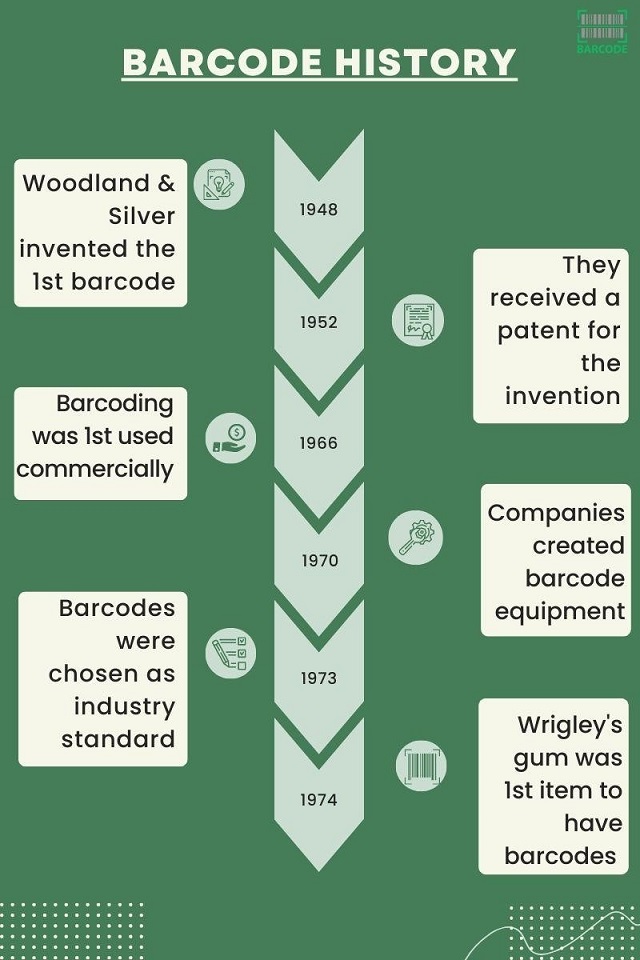
A history of barcodes
A barcode is the machine-readable equivalent of the UPC, or universal product code, which is a 12-digit number allocated to items.
It has a lot of applications in today’s world, such as tracking items in inventory. You can read more about barcoding in inventory management for further information.
The 12-digit code's many components have various functions.
-
The first six numbers indicateds the manufacturer's identification number
-
The item number is the next five numbers
-
The last digit is the check digit

Does The Size Of A Bar Code Matter?
Barcodes serve a variety of functions and the barcode label size has a large influence on its utility.
A barcode that is too tiny for an advertisement will go overlooked and will be ineffective, for instance.
Likewise, a tracking barcode that is too big will leave little area for other crucial information such as who the mail came from and who it is being forwarded to.
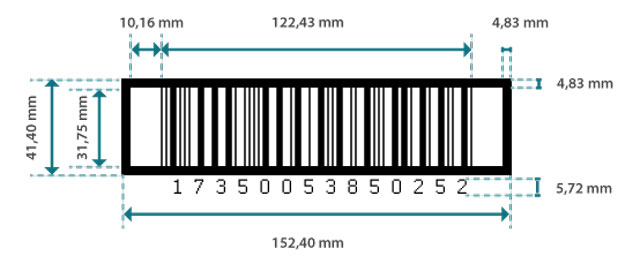
Does the size of a barcode matter?
Aside from their function, these barcodes may be scanned in a variety of ways.
One may use a smartphone to target a passing customer (Suggested: Free app to scan barcodes), while the other could be interpreted using a portable scanner, such as:
The readability of these two methods will differ depending on the barcode label sizes.
Image-based readers found on most smartphones will work fine as long as the barcode can be easily framed in the camera's frame and is not tiny.
There are typically criteria that should be fulfilled for portable LED type readers to ensure readability.
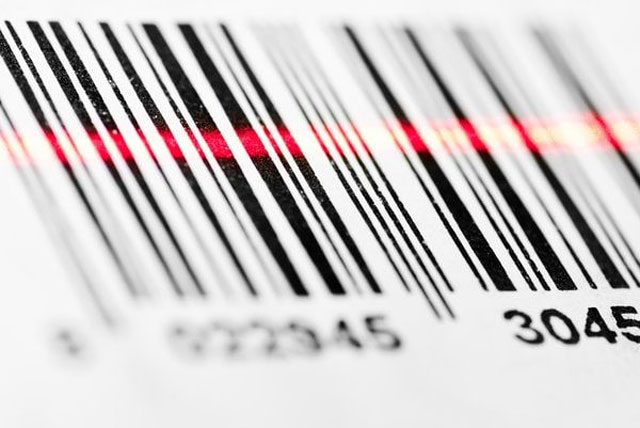
The larger these single bars are, the closer your scanner is to the barcode
These are generally indicated by a minimum barcode element width and may be found in the scanner's handbook.
This smallest element width corresponds to a single bar within the barcode. The larger these parts are, the closer your scanner is to the barcode.
The depth of field relates to the distance between the scanner and the barcode being scanned.
Scanners have a distance restriction, and if it is surpassed, the barcode will not be detected since it is out of range.
You will be able to scan your barcodes with ease if you follow the criteria of your reader.
What Are The Barcode Sizes?
Any barcode has a worldwide suggested barcode standards size that has been set to ensure reading.
However, product sizes vary greatly, and it may be required to reduce or increase both the height and weight of a barcode.
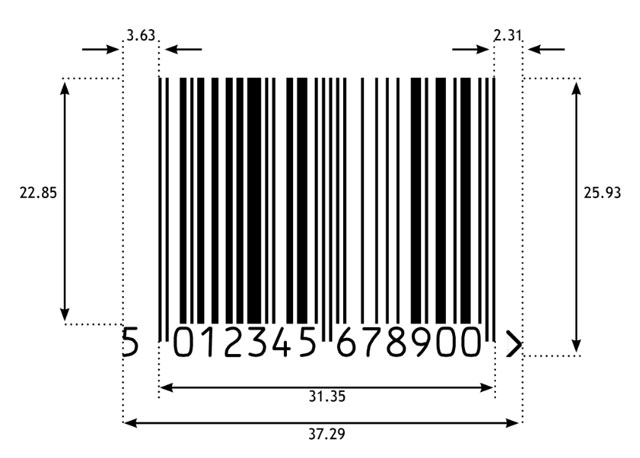
What is the barcode size?
So the primary bar code size guidelines are that barcodes can be adjusted between 80% and 200% of their specified maximum size to ensure dependability.
In further detail, they can be lowered in height by 50% and in width by 20%.
However, it is usually recommended to utilize a magnification (barcode size) that is somewhat more than the minimum.
What Overall Dimensions Should My Bar Code Be?
It is essential to make sure that your barcode is neither too large or too small for both your label and scanners.
Larger barcodes and UPCs are generally simpler to scan, but your alternatives may vary depending on your design and overall label area.
A common barcode is 1.469 inches wide by 1.02 inches high, but you can change the size as needed as long as you keep within the barcode minimum size and maximum size.
Barcode label size chart:
|
Nominal size |
1.469" wide x 1.02" high |
|
Minimum recommended size |
80% of the nominal size or 1.175" wide |
|
Maximum recommended size |
200% of the nominal size or 2.938" wide |
Width is far more important than height!
The width affects the distance between the bars and how effectively the laser can discern between them.
What Dimensions Should My Bar Code Be?
Magnification is the size of the barcode.
Magnification can vary within specified limitations. If a barcode is not within these parameters, it may not scan.
Any reduction in magnification below the nominal size (100%) may affect dependability.
So, let’s check the dimensions that some common type of barcodes should be!
UPC
A UPC barcode label nominal size is 100% magnification factor or 1.469 inches wide (from the far left-hand side number to the far right-hand side number) by 1.02 inches high (from the barcode's top to the human-readable numerals' bottom).
The minimum size for UPC barcode is 80% magnification factor (80% of the nominal size), and its maximum size is 200% magnification factor (200% of the normal size).
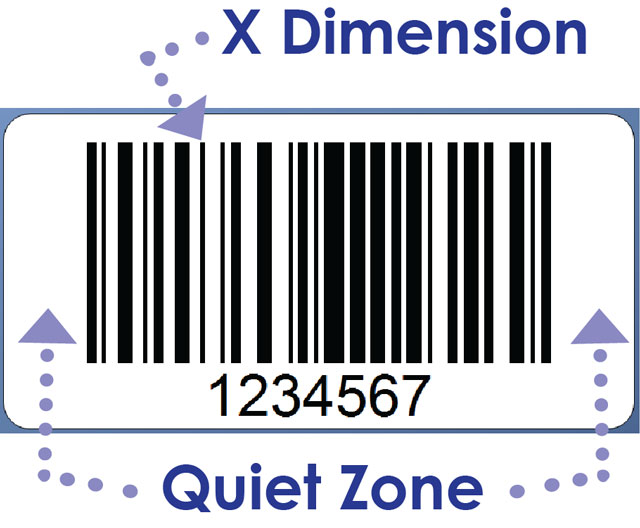
What dimensions should my barcode be?
EAN-13
The nominal dimension of a 100% EAN barcode size, including the right and left light margin areas, is 37.29mm wide and 25.93mm high.
The barcode symbol must have an opacity of 80% to 200%.

EAN 13 barcode standard size
EAN-8
If the form of the box or label legitimately and reasonably prevents the printing of a regular EAN-13 digit barcode symbol, an EAN-8 digit barcode symbol is another possibility.
The basic guideline of EAN 8 barcode minimum size is that the printing area should not exceed 8,000mm2 unless the product is cylindrical with a diameter of less than 30mm.
The nominal dimension of a 100% EAN-8 digit barcode sign, including the right and left right margin areas, is 26.73mm wide and 21.31mm high.
The barcode sign can be printed as tiny as 80%.
Due to the restricted number of GTlN-8 digits available, it is only assigned if absolutely essential.
A sample label or a copy of the exact size of the artwork should be submitted when applying for a G TIN-8 digit.

EAN 8 barcode size
ITF-14
The magnification factor for the ITF 14 barcode size can range from 25% to 100%.
A minimum magnification factor of 50% should be employed to allow efficient reading in any scenario, including conveyorised scanning.
ITF-14 barcodes with magnifications less than 62.5% should not be printed directly on corrugate using traditional (plate-based) techniques.
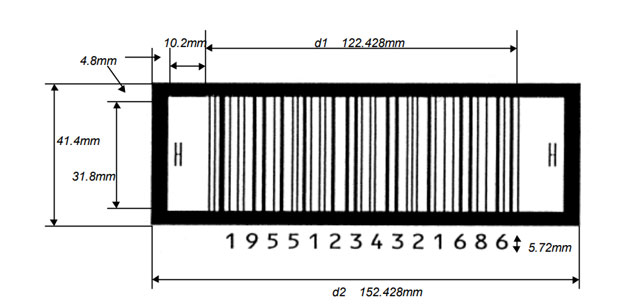
ITF 14 barcode size requirements
GS1-128
The height of a GSI -128 for widespread distribution is 32mm.
If space restrictions prevent the barcode from being printed at the minimum barcode size, it must never be less than 13mm height.

GS1 128 minimum size for barcode
The nominal or 100% size barcode can be adjusted, and the size chosen will rely on the printing method and the quality of the inks and substrates used.
The most common barcode for retail product labeling is the UPC (Universal Product Code).
It can be found at almost any grocery shop in the United States. A 12-digit numeric-only number is encoded using the symbology.
The GS1 US assigns the first six digits. The manufacturer assigns the next five numbers. The last digit is a modulo ten check digit.
The magnification of UPC barcodes can range from 0.8 to 2.0. At 0.8, the barcode is reduced to 80% of its normal size.
The UPC barcode size specifications measure 1.175 inches wide by 0.816 inches height at this magnification, which is the smallest barcode that can still be scanned.
This size, however, makes it more difficult for scanners to read the barcode information, and some will not scan at all.
Conclusion
One of the crucial stages in the labeling process is creating the barcode and UPC for a product label. It's time to focus on suitable barcode sizes for your product and choose a reliable printing firm to provide you with the high-quality labels you want.
![How To Use A Code128 Barcode Generator Effortlessly? [Guide]](https://barcodelive.org/filemanager/data-images/imgs/20221114/Code128-Barcode-Generator.jpg)

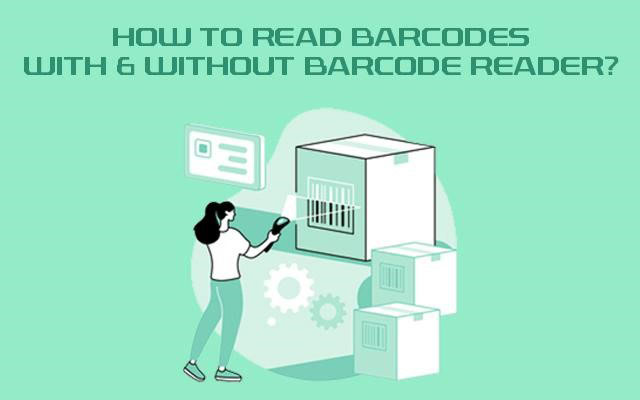


![2D Barcode Generator Explained: A Complete Guide [Disclosed]](https://barcodelive.org/filemanager/data-images/imgs/20221114/2D-Barcode-Generator.jpg)
13 Comments
Ryder
This is great stuff. Incredibly in-depth
Leave a Comment
Your email address will not be published. Required fields are marked *Barcodelive
Happy to help
Leave a Comment
Your email address will not be published. Required fields are marked *Annabelle Wright
I have a QR code but it seems to big. What should I do to make it smaller?
Leave a Comment
Your email address will not be published. Required fields are marked *Barcodelive
There are 3 things you can do: Lower the character count, lower the error correction, and remove a central graphic if it exists
Leave a Comment
Your email address will not be published. Required fields are marked *Annabelle Wright
Thanks a lot
Leave a Comment
Your email address will not be published. Required fields are marked *Harper Murphy
How small can a 2D barcode be?
Leave a Comment
Your email address will not be published. Required fields are marked *Barcodelive
2D codes can be as small as 1/30th the size of a typical barcode containing the same data. As a result, 2D codes can be printed on electronics and other small parts where space is limited
Leave a Comment
Your email address will not be published. Required fields are marked *James Murray
Whether all products with the same UPC code (barcode) have the same size?
Leave a Comment
Your email address will not be published. Required fields are marked *Barcodelive
Interesting question. In most cases the answer is yes. Meaning, for each size in a style, either the manufacturer or the retailer created unique codes for each size. Some bargain manufacturers and retailers just create one code for all the sizes.
Leave a Comment
Your email address will not be published. Required fields are marked *Christian Bell
How do you have so much knowledge? I can't find this information anywhere. One question I wanted you to answer is, How can some US brands have smaller UPC barcodes than the required 80% magnification factor? I've seen some US brands using barcode sizes of 2.5x1.8cm.
Leave a Comment
Your email address will not be published. Required fields are marked *Barcodelive
In fact, there are two different versions of UPC barcodes - UPC Type A (UPC-A) and UPC Type E (UPC-E). Type A is a typical sized barcode. Type E is a truncated version of the barcode that can be used on smaller products that may not have room for a standard Type A version
Leave a Comment
Your email address will not be published. Required fields are marked *Destiny Wood
love the article. It’s super informative and helpful just like all your other content
Leave a Comment
Your email address will not be published. Required fields are marked *Barcodelive
Glad you learned some new stuff
Leave a Comment
Your email address will not be published. Required fields are marked *Leave a Comment
Your email address will not be published. Required fields are marked *